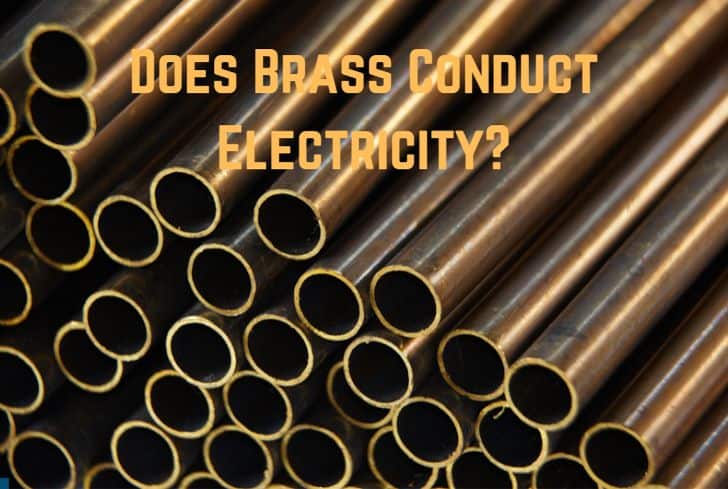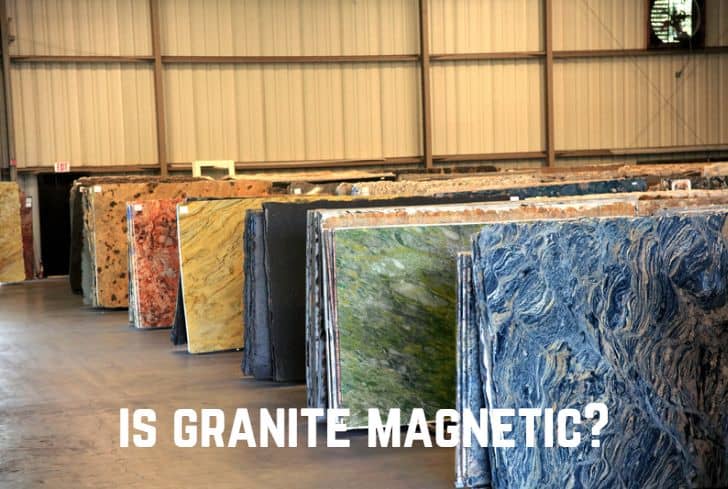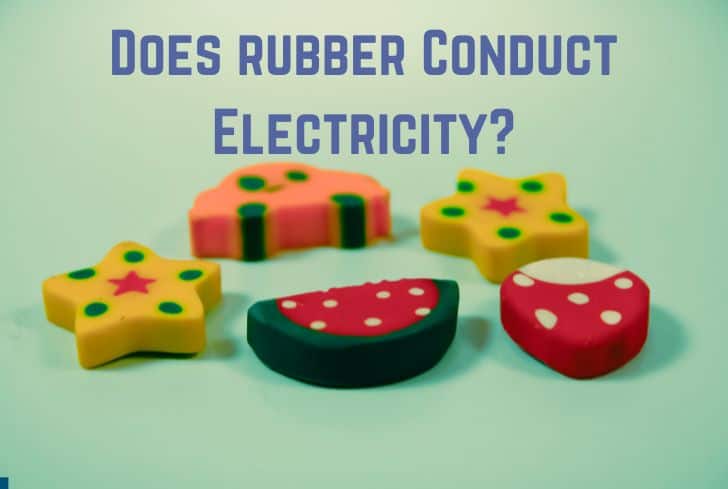Is Galvanized Steel Magnetic? (Yes. It is)

Galvanized steel is steel with a zinc coating on top. This coating prevents corrosive substances from reaching the underlying iron and therefore protects against rusting. Besides that, the coating also provides improved durability and better aesthetics.
Galvanized steel is used in a variety of industries, from construction to automotive industries. Have you ever wondered if galvanized steel is magnetic? In this article, we are going to discuss just that.
We will begin by learning about galvanized steel, its properties, and its uses. Then we will talk about its manufacturing process and magnetism. Finally, we will also look at some other kinds of steel.
Read: Is Carbon Steel Magnetic?
What is Galvanized Steel?
Galvanized steel is steel that has been coated with a zinc layer to protect it from corrosion. It is usually made by a process known as hot-dip galvanizing, which involves dipping the steel into a bath of molten zinc.
Galvanized steel is one of the most popular types of steel because of its durability, which combines the strength of steel with the resistance of zinc. The zinc acts as a barrier against corrosive elements.
Sometimes additional protection in the form of chromate conversion coating is added for further surface passivation. Galvanized steel is used in a variety of industries, such as agriculture, solar, construction, etc. It has the following advantages:
- Galvanized steel has rust resistance due to the zinc coating. This coating acts as a buffer between the steel and outside elements (oxygen, moisture, etc.), acting as a sacrificial layer of protection.
- It has a low initial cost compared to most treated steel. It is also immediately ready to use as it does not require additional preparation of the surface, paintings, etc.
- Galvanized steel has a much longer life than ordinary steel. It can last 50 years more in average environments and 20 years more in areas with severe water exposure. No maintenance is required.
Do Magnets Stick to Galvanized Steel?
Yes, galvanized steel is magnetic, therefore magnets stick to it. Although zinc is a non-magnetic material, its coating is very thin and doesn’t affect the properties of steel. Steel is largely composed of iron, which is a ferromagnetic material, and therefore, galvanized steel is magnetic.
Let us first understand what magnetism is. Magnetism is a force caused by the motion of electric charges. Every substance is made up of atoms. These atoms have electrons (particles that carry an electric charge) that circle the atom’s center, called the nucleus.
In most substances, equal numbers of electrons spin in opposite directions. This cancels out their magnetism, and they are not attracted by a magnetic field. These include things like cloth, wood, paper, etc., and are called diamagnetic.
However, in some substances, the electrons spin in the same direction. This allows their magnetic fields to combine, and it produces a magnetic field extending beyond the atoms. These objects are strongly attracted to magnets and are called ferromagnetic.
Iron has the atomic number 26, and its electronic configuration is [Ar] 3d64s2. It has four unpaired electrons in its outer shell and these spin in the same direction. Therefore, iron is a ferromagnetic material.
Steel is an alloy made up of iron and carbon that has improved strength & fracture resistance. Since it is largely made up of iron, steel is also magnetic. When we galvanize this steel, we apply a coating of zinc.
Although zinc is a non-magnetic metal, its coating is quite thin and does not inherently change the composition of the steel. Therefore, galvanized steel retains its magnetic property (due to the presence of iron content) and magnets will stick to it.
Properties of Galvanized Steel
These are the properties of galvanized steel:
- Corrosion resistance: The Galvanized steel has a zinc coating that provides excellent protection against corrosion and rust. This makes it ideal for use in outdoor environments.
- Malleability: Galvanized steel can be easily formed and shaped. Therefore, it can be used in a wide range of applications.
- Recyclability: Galvanized steel is an environmentally friendly material. It does not produce emissions and is recyclable.
- Budget-friendly: Galvanized steel is a relatively low-cost material, making it an attractive option for a variety of applications.
- Durability: Galvanized steel combines the strength of iron with the resistance of zinc. This makes it a highly durable material that can last for long periods in both everyday environments as well as those more prone to corrosion (say areas with water exposure).
Uses of Galvanized Steel
Galvanized steel is used in the following applications:
- Construction: Galvanized steel is used in construction projects, like in the frames of buildings, bridges, and stadiums. Due to its zinc coating, it can withstand rusting and does not corrode easily. Its durability is combined with its low cost. Plus, the shine that it provides gives the structures a modern look. It is also used in smaller projects like fences, tubing, rails, etc.
- Automotive industry: Galvanized steel is used in the manufacturing of vehicles, particularly for the production of automotive body panels. About 80% of most car bodies are made up using galvanized steel. Its corrosion resistance makes it ideal for automobiles, ensuring that they never rust.
- Electrical/Telecommunication Industry: It is used in the production of electrical systems, such as utility poles, electrical boxes, and wiring. Its corrosion resistance makes it perfect for outdoor electrical appliances.
- Wind and Solar Industries: Wind and solar projects require a continuous workflow. Any disruption results in loss of revenue, therefore they require material that doesn’t require excessive maintenance. Therefore, galvanized steel is usually used in such projects.
- Agriculture: It is used to create grain storage silos, fencing, and livestock enclosures. As in most cases, the resistance to natural elements is what makes it ideal for such applications.
Is Painted Galvanized Steel Magnetic?
Yes, painted galvanized steel is magnetic. The paint only changes the physical appearance of the galvanized steel and does not affect the internal composition. Galvanized steel, being largely composed of iron, retains its magnetism.
Galvanized steel is often painted with acrylic paint to improve its appearance. However, this thin layer of paint is only external and does not change the properties of galvanized steel in any significant way.
Galvanized steel is steel with a zinc coating. Neither paint nor the zinc coating inhibits the magnetic properties of galvanized steel. So, it continues to be attracted to magnets.
How is Galvanized Steel Produced?
Galvanized steel is produced by various methods, such as hot-dip galvanizing, pre-galvanizing, electrogalvanizing, etc. Out of these, the first method is the most popular, which involves dipping steel in molten zinc.
1. The first method, hot-dip galvanizing, begins by cleaning the steel so that any contaminant doesn’t hinder the adhesive process. The cleaned steel is then dipped into a bath of molten zinc, which is heated to a temperature between 815°F and 850°F (435°C and 455°C).
At this point, a chemical reaction occurs between the steel and the zinc, creating a layer of zinc-iron alloy called an intermetallic layer. The steel is then taken out from the zinc bath and cooled. You can check out this in action in this video by Philgalv Industrial.
2. A similar procedure, known as pre-galvanizing, involves putting on the zinc coating before the steel is formed into its final shape. It involves rolling the sheet metal through a cleaning agent to quickly prime it for galvanizing.
Then, the metal is put into molten liquid zinc and is immediately recoiled. The advantage of this method is that coils of steel sheets can be rapidly galvanized on a large scale. They also get a more unified coating than the traditional hot-dipped method.
3. The third method is electrogalvanizing, which involves depositing zinc on steel through electrolysis. After cleaning, steel is immersed in an electrolyte solution (usually zinc sulfate or zinc chloride).
Then, an electric current is passed through the electrolyte solution, which causes the zinc ions to be attracted to the surface of the steel. After coming into contact with the steel, the zinc ions turn into metallic zinc, which is deposited on the surface of the steel.
What Type of Steel is Most Magnetic?
Low-carbon steel and electrical steel are two types of steel that exhibit the most magnetism. However, there are other types of steel (such as austenitic stainless steel) that are not magnetic. The level of magnetism depends on the composition of the material.
Low-carbon steel contains small amounts of carbon. Since it is largely made up of iron (a ferromagnetic material), it is also highly magnetic. It is used in applications requiring magnetism, such as electrical transformers, motors, generators, etc.
Electrical steel is made up of iron and silicon (instead of carbon), and this gives it enhanced magnetic properties. Electrical steel is specially manufactured for power transmission & distribution as well as other electrical equipment.
However, some types of steel are not magnetic. For example, austenitic stainless steel contains high levels of nickel and chromium, which are non-magnetic materials. Therefore, steel also acquires this non-magnetism.
Read: Is Graphite Magnetic?
Conclusion
In this article, we have looked at the magnetism of galvanized steel. We began by understanding the alloy, its properties, and its uses. Then we talked about its manufacturing and magnetic attributes. Finally, we briefly discussed some other types of steel.






